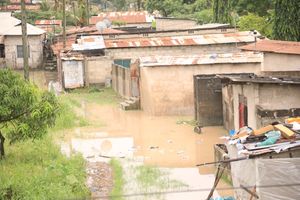ON MY MIND : Questions about the National Land Policy, 2016
What you need to know:
- Abundant land for distribution? The Policy argues that 25 per cent of available arable land is under cultivation, largely by smallholder producers, and that “there is abundant arable land for the foreseeable future” (1.1.4). Researchers discount this, saying that there is no unused land between and within villages.
In my previous article, I asked in whose interest the draft National Land Policy, 2016 will be? Here I will try to answer the question by analysing its key assumptions and policies.
Abundant land for distribution? The Policy argues that 25 per cent of available arable land is under cultivation, largely by smallholder producers, and that “there is abundant arable land for the foreseeable future” (1.1.4). Researchers discount this, saying that there is no unused land between and within villages. This explains why there is so much land conflict between cultivators and livestock-keepers, elders and youth, and communities and large-scale investors.
Is livestock keeping given equal priority? The policy begins on a positive note concerning range/pasture lands, pointing out that 50 per cent of Tanzanian households engage in livestock production, but only 2 per cent of grazing land is protected under village land use plans, hence “rangeland conservation and management should enjoy commensurate import and profile in national land designation and protection” [1.1.5]. However, the interpretation of this is usually to promote stall-fed livestock-keeping in semi-arid areas whereas a modernised nomadic system is most appropriate.
Sources of land conflict? Conflicts over land [and water] between cultivators and livestock-keepers [2.3] and between large-scale and small-scale producers [2.4] are treated separately, but many observers argue that they are integrally related. Large-scale appropriations of land for speculation, commercial production in agriculture, mining and tourism, as well as for wildlife conservation, have steadily deprived pastoralists of their original grazing land. Moreover, cultivator-pastoralist conflicts are usually resolved on behalf of cultivators, with no viable alternative land provided for grazing.
How is land valued? Land compensation is based on the market value of land [2.8, 4.8], which is interpreted in terms of what is produced for sale. However, local communities rely on the land and its products (trees, water, soil, rocks, vegetation) for much more –domestic food consumption, herbal medicine, energy and building material. The history, culture and social reproduction of the community is entirely bound up in the land. Gender relations play a major part in constructing the local agroecology, with women having a significant role to play in land management and use.
What are the de facto powers of village assemblies and women villagers within them? According to the policy, village councils will continue to administer village land, and all land allocations or alienation must be approved by the village assemblies [4.1.3] – a positive outcome, given the private sector’s lobbying against this provision. However, more efforts are needed by both government and civil society organisations to ensure villagers understand their rights under the policy and the law. Village leaders often make dubious deals with outside investors without providing appropriate information for villagers to make an informed decision. Moreover, male villagers monopolise village assemblies, with few women in attendance because of lack of information and ‘household duties’ as defined by the patriarchal division of labour. Those who attend are not encouraged to speak or play an equal part in decision-making.
Are restrictions on non-citizen and foreign companies real? On the one hand, the policy states that non-citizen and foreign companies can be granted land and/or purchase unit titles for investment purposes, but on the other hand, they are not allowed to acquire village land in any way [4.2.3]. This is a major barrier for access to bank loans for holders of Certificates of Customary Rights of Occupancy (CCROs). At the same time, it reveals the politics behind the different categories of land – general, village and reserved land. The President retains the power to acquire [village] land for “public purpose” [4.6.1], in spite of calls by civil society organisations to shift ultimate power of land allocation to the Parliament.
Why are women’s land rights limited to ‘access’? The government commits itself to “ensure equal tenure rights and access to land without any discrimination” in the crosscutting section on gender, which is welcome but not enough. This should be broadened to include access, ownership, control and use.
In summary, many challenges remain with the present draft National Land Policy, 2016. The government is urged to extend the time for consultation, and adopt more participatory measures to ensure that all Tanzanians are informed about the policy and have an opportunity to present their views. Production and wide dissemination of a popular version in Kiswahili is a first step.




